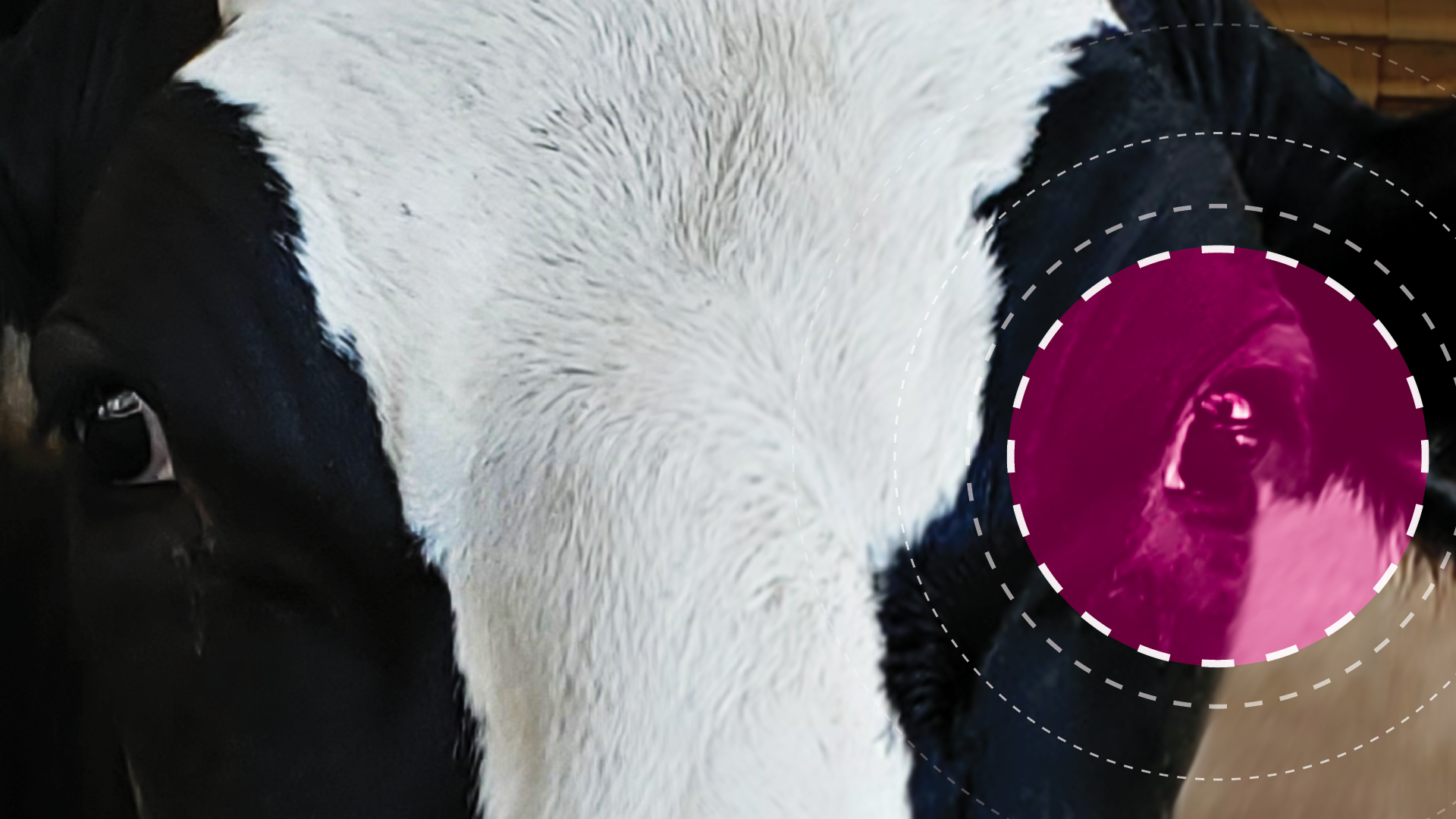Three-prong approach helps put a stop to pinkeye
By Dr. Lowell T. Midla
Producers and veterinarians alike are aware of the challenges that infectious bovine keratoconjunctivitis (IBK) – or pinkeye – presents for heifers and cows. Not only does IBK cause painful inflammation, but it can also be costly to treat and negatively impact milk production and performance.
An effective IBK management program includes all three of the following practices:
- Vaccination
- Fly control
- Environmental management

Having a rational and comprehensive management plan in place prior to pinkeye season is critical to successfully preventing IBK, which develops only if the corneal surface has been damaged.1,2
While vaccination makes animals more resistant to IBK, success is less likely if the plan does not also include fly control and environmental management. Both are necessary to prevent damage to the cornea, and thus to prevent IBK.
Vaccination
Pinkeye vaccines help limit infection and reduce lesions by stimulating antibody production in eye fluids. Broad-spectrum vaccines are typically effective against multiple infectious pinkeye strains, and it’s recommended to vaccinate animals before pinkeye season for the best immune response.
Moraxella bovis is known to be a major cause of IBK. Recently, another bacterium – Moraxella bovoculi – has been identified in some outbreaks of IBK.3 The ability of M. bovoculi to attach to the cornea seems to be rather weak, however M. bovoculi has spicules that enable it to attach to M. bovis quite well.4 If M. bovis is attached to the cornea, M. bovoculi often then overgrows the M. bovis.4
A recent study found up to 80% of cases include Moraxella bovoculi alone, or along with M. bovis.3 A vaccination program is incomplete unless you are vaccinating against both M. bovis and M. bovoculi – for example utilizing both Moraxella Bovis Bacterin and Moraxella Bovoculi Bacterin. All vaccination decisions should be discussed with your veterinarian.
Fly control
Female face flies (Musca autumnalis) stimulate the production of ocular secretions that they feed on with rasp-like mouth parts, causing damage to the surface of the cornea. Because this damage is necessary for attachment of M. bovis to the cornea, controlling face flies is critical for prevention of IBK.
There are several options for external parasite control. While popular fly control methods include fly tags, pour-ons, sprays, dust bags and back rubbers, producers should choose methods that are effective, long-lasting and easy to use.
Fly tags protect cattle faces and eyes, as insecticide is placed near those susceptible areas. If using a vaccine that requires a booster, it may be a good idea to apply fly tags at the same time to maximize efficiency and ensure control closer to the start of fly season. Applying the fly tag too early may result in the product running out before the end of the season.
Because female face flies lay eggs in fresh cattle feces, feed-through products work well for face fly control. If feed-through products or fly tags are implemented too late in the season, the fly population may already be too great for them to be effective. In these cases, apply a low-volume pour-on for rapid knockdown of the existing fly population.
Environmental management
Many environmental factors predispose animals to IBK by causing eye irritation and damage. In addition to female face flies, examples of what may cause this damage in the field include grazing in tall grass, dust, sawdust, sand, sunlight (UV radiation) and young animals eating from large round bales, among other factors.
Keeping pastures trimmed, dust controlled, etc. will minimize ocular damage. It is up to you to determine the potential environmental causes of eye irritation on your operation. In general, if you experience eye irritation, it’s likely that your cows do, too. Do what you can to prevent it.
Get ahead of pinkeye
Work with your veterinarian to create the best pinkeye management plan for your operation, incorporating the best approaches for fly control, vaccination, and environmental management.
Getting your plan of attack in place and implemented will help in maintaining animal health, welfare, productivity, and profitability. Learn more at StopCattlePinkeye.com.
References
- DeBower D, Thompson JR. Infectious Bovine Keratoconjunctivitis. IA State U Vet 1997; 59: 20-24.
- Dueger EL, Angelos JA, Cosgrove S et al. Efficacy of florfenicol in the treatment of experimentally induced infectious bovine keratoconjunctivitis. AJVR 1999; 60:960-964.
- Pinkeye in cattle. Mississippi State University Extension Service. POD-02-14.
- Addison B, Springer A. New Findings with Bovine Pinkeye. Merck Animal Health technical bulletin. 2020.
Find more content for your dairy operation.
About the author

Dr. Lowell T. Midla, V.M.D.
Dairy Technical Services,
Merck Animal Health
